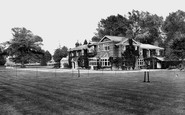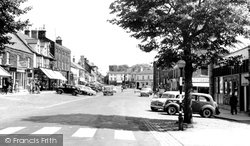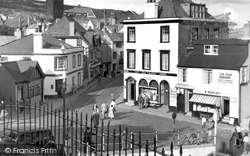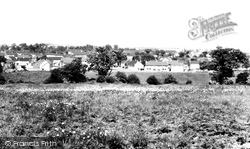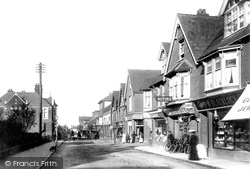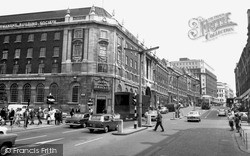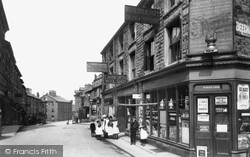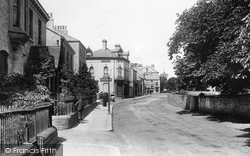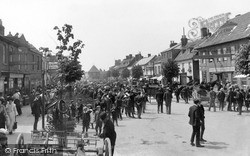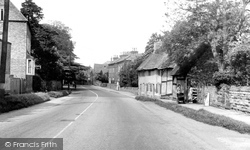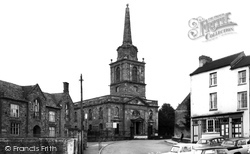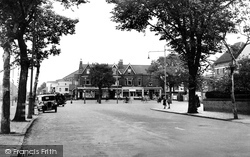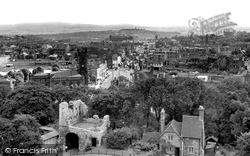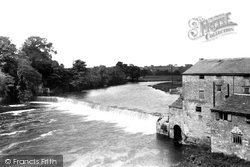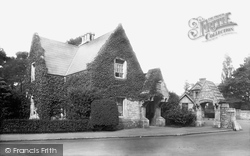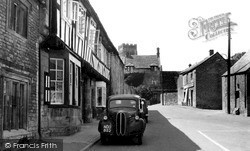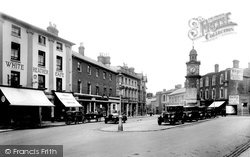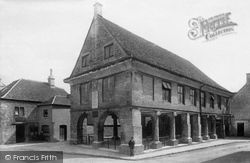Places
26 places found.
Those places high-lighted have photos. All locations may have maps, books and memories.
- Town End, Derbyshire
- Town End, Buckinghamshire
- Town's End, Somerset
- Towns End, Dorset
- Town End, Merseyside
- Town End, Cambridgeshire
- Town's End, Buckinghamshire
- West End Town, Northumberland
- Bolton Town End, Lancashire
- Kearby Town End, Yorkshire
- Town End, Cumbria (near Grange-Over-Sands)
- Town End, Cumbria (near Bowness-On-Windermere)
- Town End, Yorkshire (near Huddersfield)
- Town End, Yorkshire (near Wilberfoss)
- Town End, Cumbria (near Appleby-in-Westmorland)
- Town's End, Dorset (near Melbury Osmond)
- Town's End, Dorset (near Swanage)
- Town End, Cumbria (near Ambleside)
- Town End, Cumbria (near Lakeside)
- Town End, Cumbria (near Kirkby Lonsdale)
- Town End, Cumbria (near Ambleside)
- Town's End, Dorset (near Bere Regis)
- West-end Town, South Glamorgan
- Townend, Derbyshire
- Townend, Strathclyde (near Dumbarton)
- Townend, Staffordshire (near Stone)
Photos
26 photos found. Showing results 3,741 to 26.
Maps
195 maps found.
Books
160 books found. Showing results 4,489 to 4,512.
Memories
3,719 memories found. Showing results 1,871 to 1,880.
The Beatty And Us
Like alot of young Kiwis, my wife and I started our OE (Overseas experience) in 1986, and in January 1987 found ourselves in Motspur Park as a result of applying and getting bar jobs at the Earl Beatty pub. Graeme and Marie ...Read more
A memory of Motspur Park in 1987 by
Childhood Adventure
I'm not prepared to reveal my real name online, however I was a child during the 70's the duration of which was spent in Warnham. This house belonged to some old dear I met only a couple of times, she was housebound ...Read more
A memory of Warnham Court School in 1977 by
Bridgewater Canal
My younger brother Russell and I grew up on Coniston Road in Stretford and one of my earliest memories was of going down to the canal armed with pickle jars that had breathing holes stabbed into the lid (a fork from mums kitchen ...Read more
A memory of Stretford in 1971 by
Coronation
A party was held on Riverhall street to celebrate the Queens Coronation. It poured down with rain and the girls went somewhere under cover, I think the boys stayed in the rain. Played many games and took part in races. My sister was a ...Read more
A memory of Wandsworth in 1953 by
Waterloo In The 1940s To 1950s
My early memories are of Waterloo where I used to live at Winchester Avenue until 1958. My father died there in 1989. On College Road there were air raid shelters which me and other kids played in after the ...Read more
A memory of Waterloo by
Im From Auld Millfield
This memory is from the year of the Coronation (1953), I was 10 then and the street parties were on, we had ours in Spencers Steel Works canteen and we got a Coronation mug. We went to sleep by the sound of the steam hammer ...Read more
A memory of Newburn in 1953 by
The Wheatsheaf Pub At Little Burstead
It seems this is the first memory to be posted. My grandparents (Florence and Max Vetterlein) had the Wheatsheaf pub for about six years to 1957. They were tenants of the brewers Charringtons. There ...Read more
A memory of Little Burstead in 1953 by
Living And Working In Great Yarmouth
Back in 1976 I moved away from home to work as a photographic salesman at Debenhams in Great Yarmouth. I also helped out at the Norwich branch. I found a 'home from home' at Pavilion Road in Gorleston ...Read more
A memory of Great Yarmouth in 1976 by
Queens Road
We lived in Chigwell during the 1960s before moving to Hertfordshire in 1969, which seemed like a foreign country then, strange accents etc. How times change! My father, John, was organist at St John's Church, Buckhurst Hill and ...Read more
A memory of Buckhurst Hill in 1966 by
The Dutchmen
This is only an approximate year of 1954. There was the old hospital at Newburn by the Stanners and it was occupied by these Dutchmen who had came to dredge the Tyne. We would spend many an evening sitting chatting to them as they sat ...Read more
A memory of Newburn in 1954 by
Captions
5,111 captions found. Showing results 4,489 to 4,512.
The newly opened post office of 1956 (right) served the town until the late 1990s, when it was sub- divided into three retail units.
On the other side of Bridge Street are the Rock Point Inn (centre right), where steps and signs lead to its Town View Restaurant.
BASILDON is a New Town, yet it has seen more changes over the past 60 decades than most places in Britain - and it has a history that will fascinate most of its present inhabitants.
This view looks back towards the town centre. These Georgian buildings with their refined sash windows have gone.
This thoroughfare is a continuation of Westgate and Park Lane, and at 80 ft wide is 10 ft wider than Union Street, Aberdeen.
Carnforth, six miles north of Lancaster, has a place in history as a railway town.
Between 1633 and 1860 a bell was tolled daily in the town's 15th-century Curfew Tower owing to an unusual bequest.
This view reveals Boston's elegant and urbane character. Handsome and dignified Georgian houses and villas line the leafy street.
When in the 1950s Reginald Hine, the great Hitchin historian, wrote of the town, 'It is lamentable what we have lost during the last 100 years', he was complaining of the desecration of the buildings and
This photograph was taken from Windmill Hill, the only point in the town that is higher than the castle. The road curving up to the left of the castle is Roydon Road, known at this time as Zulu Road.
This statue of one of Bedforshire's famous sons was made by the noted sculptor, Boehm, in 1873, and presented to the town by the then Duke of Bedford in June 1874.
This view looks south to the old Town Hall, the building in the centre in the distance. The street is thronged with farmers and their families.
In this peaceful scene, the fact that the village has a longstanding domestic industry tradition in framework knitting and basket making is not immediately apparent.
These societies sprang up in the 19th century to help poorer families to save for rainy days, and to help provide decent burials for them.
Development was slow and gradual as the inhabitants dragged a poor existence from the sea and the land.
Standing on a limestone hill, Dudley Castle dominates the town.
In this peaceful scene, the fact that the village has a longstanding domestic industry tradition in framework knitting and basket making is not immediately apparent.
The brewery chimney came down in 1959, and the remaining building became the site of the bus station. On the outskirts of the town was the Naval Training Ship HMS 'Cabot'.
The lodge became known as County Gates because this junction on the main Bournemouth-Poole road was also the boundary between both the two towns and Hampshire and Dorset.
The 15th-century tower of St Peter and St Paul church is on the skyline. It was built by the town's rich inhabitants during a period of religious fervour.
Freed of livestock, the Saturday market became a more congenial place; it was thriving and prosperous, despite competition from a new Monday market introduced in 1883.
Godsmark's (second from left) have been in business and in the same shop for over 80 years, but most of the other businesses have changed. W M Kirk (left) is now Ambridge's Fish and Chip Restaurant.
It is supported on stone pillars with a row of wooden columns in the centre, and is surrounded by a collection of 17th- and 18th-century hotels and town houses.
This market town is noted for its rare 13th-century lead spire and late Norman nave.
Places (26)
Photos (26)
Memories (3719)
Books (160)
Maps (195)

